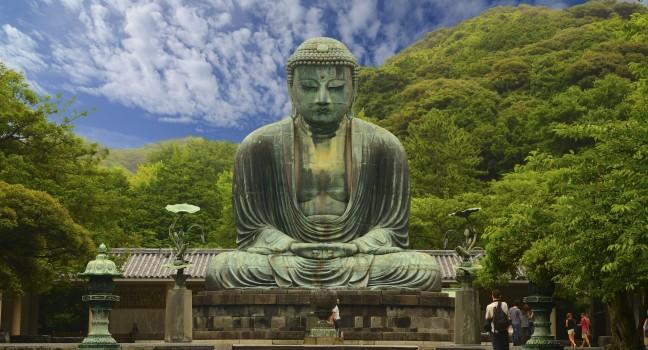Kamakura

As a religious center, Kamakura presents an extraordinary legacy. Most of its temples and shrines are in settings of remarkable beauty; many are designated National Treasures. If you have time for just one day trip away from Tokyo, spend it here.
For the aristocrats of the Heian-era Japan (794–1185), life was defined by the Imperial Court in Kyoto. Who in their right mind would venture elsewhere? In Kyoto there was grace and beauty and poignant affairs of the heart; everything beyond was howling wilderness. By the 12th century two clans—the Taira (pronounced “ta-ee-ra”) and the Minamoto, themselves both offshoots of the imperial line—had come to dominate the affairs of the court and were at each other's throats in a struggle for supremacy. The rivalry between the two clans became an all-out war, and by 1185 the Minamoto were masters of all Japan. Yoritomo no Minamoto forced the Imperial Court to name him shogun; he was now de facto and de jure the military head of state. The emperor was left as a figurehead in Kyoto, and the little fishing village of Kamakura, a superb natural fortress surrounded on three sides by hills and guarded on the fourth by the sea, became—and for 141 years remained—the seat of Japan's first shogunal government.
After 1333, when the center of power returned to Kyoto, Kamakura reverted to being a sleepy backwater town on the edge of the sea. After World War II, it began to develop as a residential area for the well-to-do. Though the religious past is much in evidence, nothing secular survives from the shogunal days; there wasn't much there to begin with. The warriors of Kamakura had little use for courtiers, or their palaces and gardened villas; the shogunate's name for itself, in fact, was the Bakufu—literally, the "tent government."
Recommended Fodor's Video
Elsewhere in Kamakura
Downtown Kamakura >
Restaurants (0), Things to do (0), Hotels (0)
Hase >
Restaurants (0), Things to do (0), Hotels (0)
Kita-Kamakura >
Restaurants (0), Things to do (0), Hotels (0)




